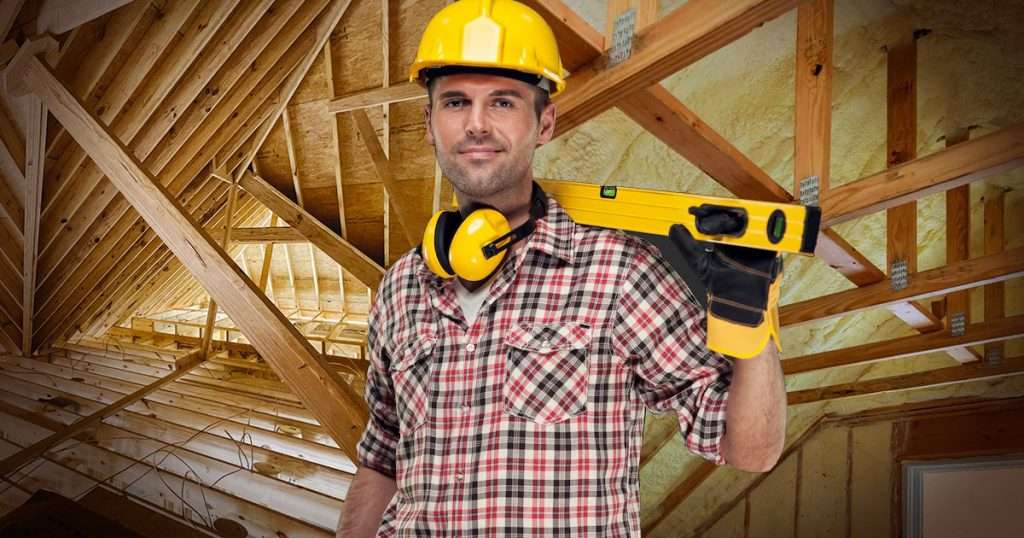Insulating your attic is a smart way to improve energy efficiency and make your home more comfortable throughout the year. Whether you’re looking to reduce heating and cooling costs or enhance the overall insulation in your home, installing attic insulation can be a rewarding DIY project.
Before Installing Insulation
Gather Materials and Tools: Before you begin the insulation process, it’s essential to gather all the necessary materials and tools. This ensures you have everything at hand, streamlining the installation and minimizing interruptions. Here’s a checklist of what you’ll need:
- Insulation Material: Choose insulation rolls or batts that are suitable for your attic space. Consider factors like R-value (thermal resistance) and material type (fiberglass, cellulose, etc.) based on your climate and insulation needs.
- Protective Gear: Prioritize safety with the right equipment. Wear gloves to protect your hands from fiberglass irritation, safety glasses to shield your eyes, and a dust mask to prevent inhalation of insulation particles.
- Utility Knife: A sharp utility knife is essential for cutting insulation materials to fit around obstacles like beams, vents, and electrical fixtures.
- Measuring Tape: Accurate measurements are crucial for calculating the amount of insulation needed and cutting materials to the correct size.
- Caulking or Spray Foam Insulation: Seal air leaks effectively using caulking or spray foam insulation. This helps maintain the efficiency of your insulation and prevents heat loss.
- Attic Access Tools: Depending on your attic’s configuration, you may need a ladder, work lights, and other tools to access and work safely in the attic space.
- Trash Bags or Container: Have a method for disposing of waste materials like cuttings and packaging to keep your workspace tidy.
Insulating an Attic With Roll or Batt Insulation
How to Install Rolled Insulation in the Ceiling
Installing rolled insulation in the ceiling of your attic is a straightforward process that can significantly improve your home’s energy efficiency. Here’s a clear explanation of what to do next:
- Prepare the Area: Before you begin, ensure the attic space is cleared of any debris or obstacles that could hinder your work. Adequate lighting is essential for visibility and safety during installation.
- Lay Out Insulation: Roll out the insulation perpendicular to the ceiling joists. It’s crucial not to compress the insulation excessively, as this reduces its thermal performance. Allow the insulation to naturally expand to its full thickness.
- Cut to Fit: Use a utility knife to trim the insulation to fit around obstacles such as pipes, electrical wires, and other fixtures protruding from the ceiling. Ensure each piece fits snugly without leaving gaps that could compromise insulation effectiveness.
- Cover the Entire Area: Continue rolling out insulation until the entire attic ceiling is covered. Overlap the edges of adjacent insulation rolls slightly to ensure there are no gaps in coverage. This helps maintain consistent thermal resistance throughout the attic space.
- Safety First: Make sure to wear gloves, safety glasses, and a dust mask while installing insulation. This keeps you safe from skin irritation and breathing in insulation fibers.
How to Install Rolled Insulation in the Attic
If you’re putting insulation directly on the attic floor, follow these steps to make sure it’s done right:
- Start at the Perimeter: Begin laying insulation along the perimeter of the attic floor, working from one side towards the opposite end. Fit each roll tightly between the beams to keep heat from moving between your rooms and the attic.
- Fit Around Obstacles Blocking the Way: Just like with the ceiling, use a sharp knife to cut the insulation so it fits perfectly around vents, chimneys, and beams.
- Layer Insulation: Depending on your climate and desired R-value, you may need to install multiple layers of insulation. Each subsequent layer should be laid perpendicular to the previous one to minimize thermal bridging and ensure consistent coverage.
- Maintain Ventilation: Avoid covering soffit vents with insulation. These vents are crucial for allowing fresh air to enter the attic and preventing moisture buildup, which can compromise the insulation’s effectiveness and lead to mold growth.
This method makes your home use less energy, lower your heating and cooling bills, and feel more comfortable overall.
Which Way Does Insulation Face?
When installing insulation, it’s essential to place it correctly for maximum efficiency:
- Vapor Barrier: For cold climates, ensure the vapor barrier (typically facing down) is installed toward the heated living space. In warmer climates, the vapor barrier faces upwards towards the attic.
- Facing Direction: Check the manufacturer’s instructions on which side of the insulation should face toward the interior of the house for optimal performance.
Ensuring Effective Attic Insulation
Adding attic insulation yourself is a useful project that can make your home more energy efficient and comfortable. Following these steps on how to install rolled or batt insulation can effectively manage the process while ensuring proper insulation coverage and energy savings for years to come.

